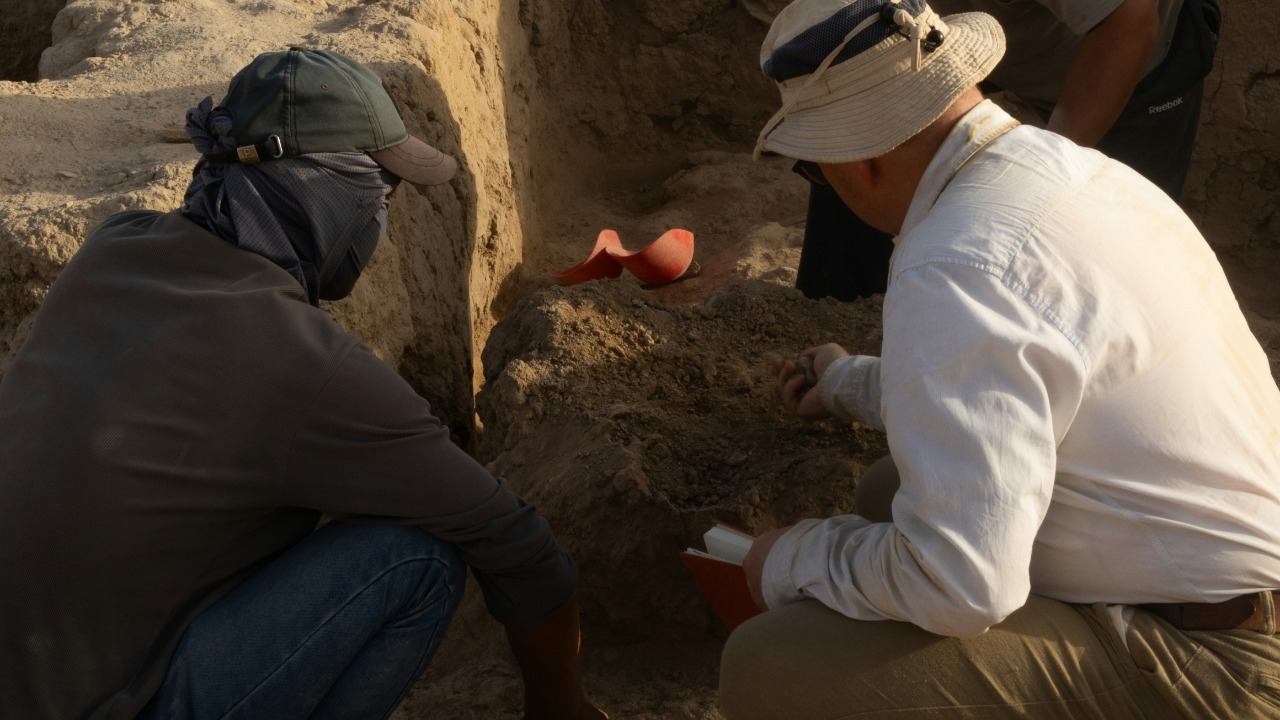
In a fascinating discovery, archaeologists have unearthed a 4,500-year-old limestone tablet inscribed with a chilling royal threat. The tablet, found in the ancient city of Girsu in southern Iraq, carries a warning from the ruler Enmetena, cautioning that anyone who disturbs the graves of his predecessors will face divine retribution, including death and the obliteration of their lineage. This find, announced in May 2023, offers a unique glimpse into early Mesopotamian burial customs and the exercise of royal authority.
The Girsu2 Project
The Girsu2 Project, a joint venture initiated in 2016 between the University of Pennsylvania and Iraq’s State Board of Antiquities and Heritage, aims to excavate and document the ruins of ancient Girsu, a significant Sumerian city-state. The project has already unearthed over 200 cuneiform tablets and fragments, employing non-invasive techniques such as drone mapping and geophysical surveys to preserve the site’s delicate mud-brick structures. The limestone tablet was discovered in a secondary context near a temple complex dedicated to Ningirsu, the city’s patron god, during the 2022-2023 field season.
Uncovering the Tablet
The tablet, measuring approximately 20 by 15 centimeters and weighing about 1.5 kilograms, was found partially buried in silt from ancient floods. It features 16 lines of cuneiform script on one side and was discovered intact by a team led by project director Holly Pittman. The tablet was retrieved from a stratigraphic layer dating to the Early Dynastic III period, around 2500-2350 BCE. After initial on-site cleaning revealed the script’s well-preserved state and no signs of modern tampering, the tablet was immediately transported to the Iraq Museum in Baghdad for further analysis.
Decoding the Cuneiform Inscription
The inscription on the tablet begins with a dedication by Enmetena to the god Ningirsu, followed by a detailed curse threatening the destruction of any violator’s “house” and the scattering of their descendants. The curse, translated verbatim, reads: “May Ningirsu, the mighty warrior, shatter the violator’s neck like a clay pot.” Linguist Ben Studevent-Holan from the Cuneiform Digital Library Initiative led the translation, confirming the text’s authenticity through comparison to similar foundation deposits from Lagash. The script uses archaic Sumerian grammar, including rare logograms for “grave” and “retribution,” which align with known texts from the nearby site of Lagash.
Enmetena’s Reign and Legacy
Enmetena, who ruled the city-state of Lagash from approximately 2404 to 2375 BCE, is known for his military victories against neighboring Umma and for building projects funded by war spoils, as recorded in his own stelae. He was the son of Eannatum, another prominent Lagash ruler, and his inscriptions often emphasize piety and protection of sacred sites. This tablet exemplifies his efforts to safeguard royal tombs. Enmetena’s dynasty ended with the rise of the Akkadian Empire under Sargon around 2334 BCE, but his threats reflect a broader Mesopotamian tradition of posthumous curses to deter looters.
Significance for Mesopotamian Archaeology
The tablet provides direct evidence of organized grave-robbing prevention in Early Dynastic Sumer, contrasting with later Assyrian practices where curses were more elaborate and personalized. It corroborates textual references in the Sumerian King List to Lagash’s religious fervor, potentially linking to the site’s role as a pilgrimage center for Ningirsu worshippers. Compared to a similar 4,200-year-old curse tablet found in Girsu in 2019, this artifact shows the evolution of royal rhetoric over centuries.
Preservation and Future Research
The tablet underwent conservation at the Iraq National Museum using laser cleaning and 3D scanning to create a digital replica, ensuring its long-term stability against environmental degradation. Ongoing analysis includes isotopic testing of the limestone to trace its quarry origin, potentially to the nearby Zagros Mountains. The Girsu2 Project plans to exhibit the tablet publicly in 2024 at the Penn Museum, alongside virtual reality reconstructions of Enmetena’s era to educate on the cultural role of ancient threats.
More from MorningOverview